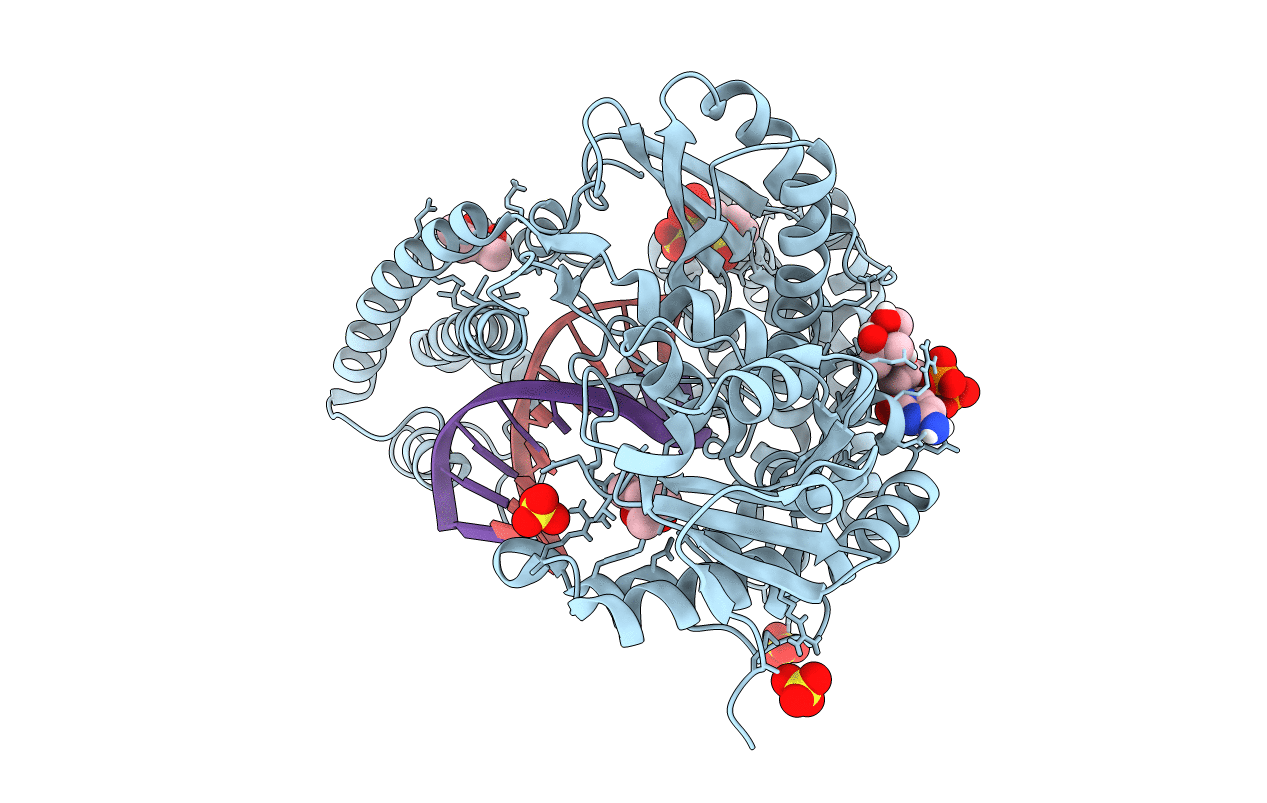
Deposition Date
2012-03-02
Release Date
2012-06-06
Last Version Date
2023-09-13
Entry Detail
PDB ID:
4E0D
Keywords:
Title:
Binary complex of Bacillus DNA Polymerase I Large Fragment E658A and duplex DNA
Biological Source:
Source Organism:
Geobacillus kaustophilus (Taxon ID: 235909)
Synthetic construct (Taxon ID: 32630)
Synthetic construct (Taxon ID: 32630)
Host Organism:
Method Details:
Experimental Method:
Resolution:
1.58 Å
R-Value Free:
0.18
R-Value Work:
0.16
R-Value Observed:
0.16
Space Group:
P 21 21 21


